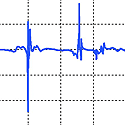U-Michigan launches strategic vision, pledges to be ‘the defining public university’

After a year of gathering input from the campus community, the U-M administration has released its strategic vision for the next 10 years. Vision 2034 — detailed in an initial 43-page report — calls upon the University to leverage its interdisciplinarity and excellence at scale to educate learners, advance society, and make groundbreaking discoveries.
-
Coaches in the classroom: Applying sports leadership to business
From the football field and basketball court to the corporate boardroom and executive suite, a new University of Michigan executive education program will teach business leadership through lessons learned in U-M sports.
-
Belief in global warming rebounds after period of decline
The percentage of Americans who believe in global warming has reached the highest level since the fall of 2009, rebounding from a period of significant decline, a new survey reports.
-
Heart-powered pacemaker could one day eliminate battery-replacement surgery
A new power scheme for cardiac pacemakers turns to an unlikely source: vibrations from heartbeats themselves.
-
How social media helped save a language
Fewer than 10 people born in Michigan are fluent in the native language of the area’s indigenous people. Yet more than 2,700 people “like” the language on Facebook.
-
When continents collide: A new twist to a 50 million-year-old tale
Fifty million years ago, India slammed into Eurasia, a collision that gave rise to the tallest landforms on the planet, the Himalaya Mountains and the Tibetan Plateau. India and Eurasia continue to converge today, though at an ever-slowing pace. University of Michigan geomorphologist and geophysicist Marin Clark wanted to know when this motion will end and why.
-
Renaissance man
U-M’s first black football player, George Jewett, spoke four languages, was valedictorian of his high school, earned a medical degree, and could wriggle through defenders or break a nose when he had to.
Columns
-
President's Message
AI’s promise for teaching and learning
As U-M customizes Gen AI tools on campus, President Ono focuses on best practices defined by accessibility, privacy, integrity. -
Editor's Blog
Something old, something new
Who's ready for an excellent adventure? Just keep an eye peeled for the (virtual) hot lava. -
Climate Blue
Order from disorder
Ricky Rood explains the organizing principles behind weather, which is how we feel climate. -
Health Yourself
Getting a leg up on sciatica and piriformis syndrome
Victor Katch compares and contrasts sciatica and piriformis syndrome and explains how to ease that pain in your butt.
The Art Show
Founded in 1990 with a single theatre workshop, the Prison Creative Arts Project (PCAP) is a program of U-M’s Residential College. Courses serve as gateways for undergraduate participation in prison arts workshops and provide academic training in issues surrounding incarceration and practical skills in the arts. The program’s Annual Exhibition of Artists in Michigan Prisons (“the art show”) is one of the largest exhibits of artwork by incarcerated artists in the world. The annual exhibition, free to the public, is presented with support from the Michigan Arts and Culture Council. It runs through April 2 at the Duderstadt Gallery. (Click on the images to enlarge. Images are courtesy of PCAP.) Learn more about PCAP.



















